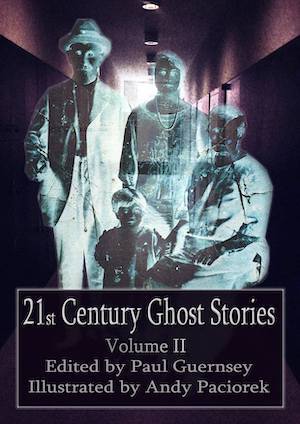by Editor
on September 20, 2014
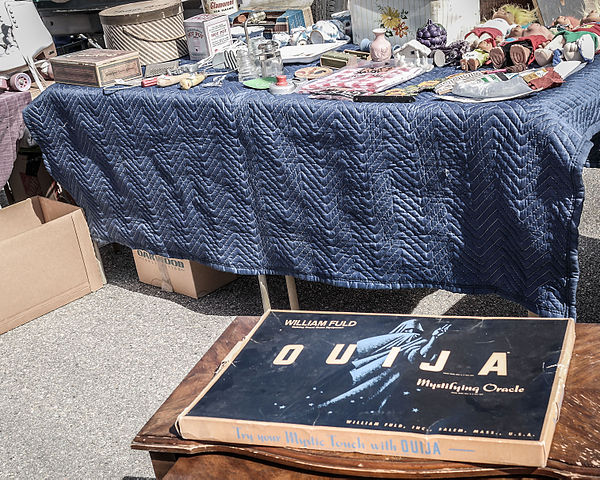
A Modern Commercial Pre-1966 William Fuld Ouija Board Intended As Entertainment. Photo: Visitor7
The Story Of The ‘Mystifying Oracle’ That Named Itself
The story of how the Ouija board was given the name Ouija (wee-ja) board actually is more amusing than it is mysterious. Many people assume that Ouija is a combination of the French (oui) and German (ja) words for “yes.” But it is not.
According to Ouija historian Robert Murch, the board suggested its own name one day in the early 1890s while it was being used by Elijah Bond, one of the original investors in the company that manufactured it, and members of Bond’s family. When the group asked the board what they should call it, it spelled out, “Ouija.” When they asked what Ouija meant, the board reportedly told them, “Good Luck.” [continue reading…]
by Editor
on September 20, 2014
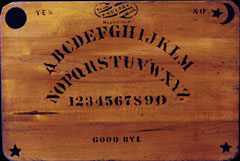
A Photo Of One Of The Original Ouija Boards From The Late 1800s. Note That Ouija Board Elements—Letters, Numbers, And Words—Have Changed Little Since The Beginning. Photographer: Unknown.
Ouija Boards: A Mystical, Mostly American, Invention
Most of what we know about the history of the Ouija board comes to us through the work of a spirit-board enthusiast and collector named Robert Murch, who has researched the topic since 1992.
Murch, probably the world’s foremost authority on Ouija boards, tells us that far from being an enchanted and somewhat sinister relic from the distant—perhaps pre-Christian—past as many people think, the Ouija board was created as a game in the last decade of 19th century America. As you can see from the photo (above), the first commercial talking boards were made of wood; the original purchase price was $1.50. [continue reading…]
by Editor
on September 17, 2014
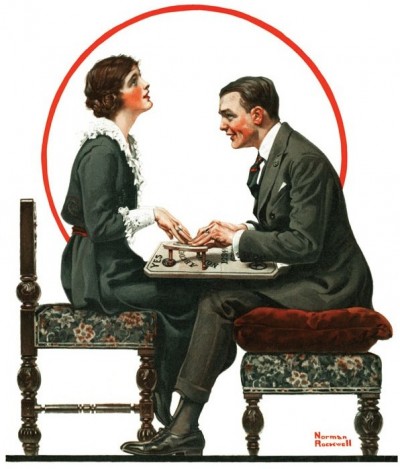
Ouija Board: Satan’s Toy Or Healthy Family Fun? Norman Rockwell’s May 1, 1920 Cover Illustration For The Saturday Evening Post.
Is It Dangerous To Play With A Ouija Board?
As strange as it may seem, playing with a Ouija board did not used to be a controversial activity. For most of its existence, from the time of it’s invention by leisure-time entrepreneurs in the late 1800s until the early 1970s, “spirit” boards or “talking” boards were seen as an interesting, safe, and pleasurable pastime for friends and families, including the kids. The Norman Rockwell illustration (above) of a wholesome, early 1920s middle-class couple having fun with a Ouija board pretty much sums up the attitude that prevailed through most of the Twentieth Century.
Certainly, plenty of people who used a Ouija board really believed they were communicating with spirits. But almost nobody thought they were evil or harmful spirits; rather, people believed or imagined that they were contacting the ghosts of departed loved ones, or other disembodied but benign entities who wanted to pass a message from the other side.
So, what happened to turn it all around? [continue reading…]
by Editor
on September 16, 2014
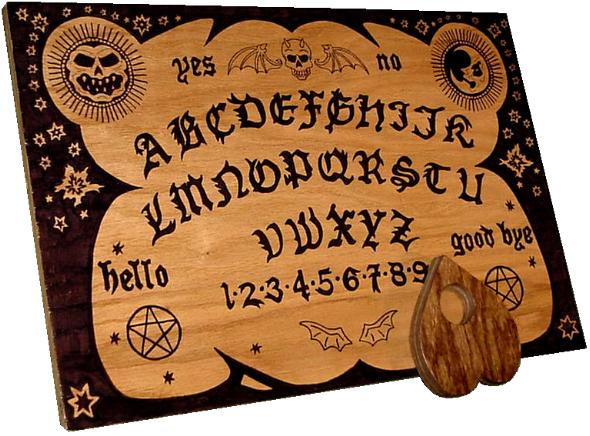
An Early English Ouija Board
Ouija Boards—What Are They Really?
Almost all of us have seen, if not used, a Ouija (pronounced wee-ja) board. Game and toy company Hasbro, Inc., currently owns the trade mark, but around nine other companies produce similar products, calling them “spirit” or “talking” boards. Regardless of the names the manufacturers use, the public generically refers to all of them as Ouija boards.
In its contemporary form the Ouija board is a game board illustrated with letters, numbers, and the words “No,” “Yes,” and “Good bye.” The Ouija set includes a small, plastic table called a planchette designed to slide easily across the board on a trio of felt feet. The planchette usually contains a round window from the center of which protrudes a brass pin that serves as a pointer. [continue reading…]





